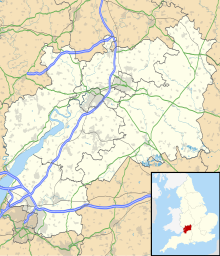|
Leckhampton Hill and Charlton Kings Common
Leckhampton Hill and Charlton Kings Common (grid reference SO952187) is a 63.8-hectare (158-acre) biological and geological Site of Special Scientific Interest in Gloucestershire, notified in 1954.[1][2] There are five units of assessment.[3] The site is listed in the 'Cotswold District' Local Plan 2001-2011 (on line) as a Key Wildlife Site (KWS).[4] LocationThe site is in the Cotswold Area of Outstanding Natural Beauty and is one of a series of unimproved Jurassic limestone grassland area which are located along the Cotswold scarp. It is south of Cheltenham and near the communities of Leckhampton and Charlton Kings, and has a north-facing aspect. The site also includes disused quarry faces, and quarry spoil which has been vegetated.[1] GeologyThe Leckhampton quarries expose the thickest single cross-section through the Middle Jurassic, Inferior Oolite strata of the area. They are a major research interest, and there are many published accounts of the last 150 years. Strata of some 60 m are exposed, and the large outcrops are of significant importance to those studying palaeontology or sedimentology, and for studying ancient environments generally.[1] BiologyThe site supports a range of habitats which include unimproved calcareous grassland, woodland and scrub, cliff faces and scree slopes. The grassland is of major importance and it comprises a tall ungrazed sward. This is dominated by tor-grass, upright brome, meadow oat-grass, sweet vernal-grass and quaking grass. It is noted for its range of herbs which include salad burnet, common rock-rose, common bird's-foot-trefoil. The quarry floors support wild thyme, dwarf thistle, yellow-wort and autumn gentian. The site supports many plants which are scarce at a national or county level. These include fly orchid, musk orchid and purple milk-vetch. It is one of a small number of sites which support meadow clary in the county.[1] Shrub areas support nesting birds such as meadow pipit and grasshopper warbler. It is a shelter area for invertebrates and small mammals.[1] There are wooded areas of broad-leaved and coniferous trees including mature beech. These areas support a woodland flora such as ivy broomrape, white helleborine and greater butterfly-orchid.[1] There is a reported population of adder.[1] See also
References
SSSI Source
External links
|
||||||||||||||||||||









